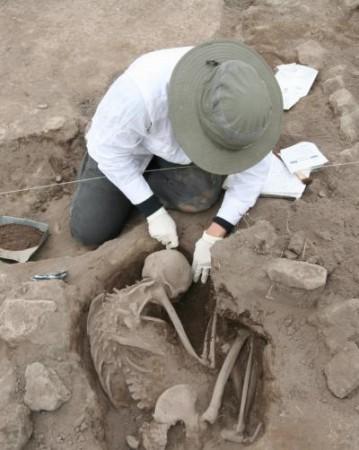
Aztec human sacrifices were far more gruesome and widespread than one could imagine. A new research reveals that Aztecs marched young, healthy victims to a temple where their hearts and skulls were removed in religious ceremonies.
The new research is uncovering the vast scale of human sacrifices performed as religious rituals to honor the gods.
Trophy Rack
In 2015, archaeologists from National Institute of Anthropology and History (INAH), Mexico found the 'trophy rock' near the site of the Templo Mayor, the main temples in the Aztec capital Tenochtitlan, which became Mexico city.
Skull Tower
Now the findings say that 'tower of skulls' is just a small part of a massive display of skulls known as Huey Tzompantli. The analysis just proves that the gruesome accounts from conquistadors were actually true.
According to the findings which were found beneath the streets of modern Mexico City, the priests removed the still-beating hearts of captives, defleshed their heads before carving holes in the sides and placed the rack of skulls in the 'tzompantli', a pyramid with two temples on top.
The skulls would begin to fall to pieces, losing teeth and even jaws after months or years in the sun and rain.
The priests would then remove it to be made into a mask and placed in an offering, or add it to the tower of skulls and made the rack.
Some Spanish conquistadors estimate that the rack alone contained 130,000 skulls.
![A 'tower of skulls' found in Aztec site. [Representational image] Skull](https://data1.ibtimes.co.in/en/full/636529/skull.jpg?h=450&l=50&t=40)
What does it symbolize?
The skull rack was seen as 'the seeds that would ensure the continued existence of humanity' as a sign of life, archaeologists say.
They are now beginning to study the Mexican rituals and post-mortem treatment of the bodies sacrificed.
Raùl Barrera Rodríguez, director of INAH's Urban Archaeology Program and leader of the team that found the tzompantli said, "This is a world of information."
Findings
The archeologists collected 180 mostly complete skulls from the tower and thousands of skull fragments. They believe that the cut mark on the skull only confirms that the head was 'defleshed' after death and the decapitation marks are 'clean and uniform'.
Of the skulls analyzed, three quarters belonged to men mostly aged between 20 and 35. About 20 percent belonged to women and 5 percent were children.
The size and the space of the holes in the skull once contained the wooden posts lets the team to estimate the tzompantli's size for the first time.
The skull tower was compared to a basketball court, with 35 meters length and 12 to 14 meters width, and 4 to 5 meters height. The tower was nearly 5 meters in diameter and at least 1.7 meters tall.
The skulls were found to be stuck together with mortar - remnants of one of the towers flanking the tzompantli.
Rodrigo Bolanos, a biological anthropologist investigating the original 2015 findings said, "We were expecting just men, obviously young men, as warriors would be, and the thing about the women and children is that you'd think they wouldn't be going to war."
"Something is happening that we have no record of, and this is really new, a first in the Huey Tzompantli," he added.
So far, the archaeologists have found more than 650 skulls caked in lime.
Aztec capital Tenochtitlan was founded in 1325 and became the capital of the Aztec Empire in the 15th century before it was captured by the Spanish in 1521.

















